What is the difference between a boiler and a water heater?
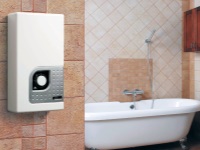
Water heater - a device for heating water in the water supply system of an apartment or private home. According to the principle of operation, all water heaters can be divided into storage and flow. Boiler is a storage water heater.
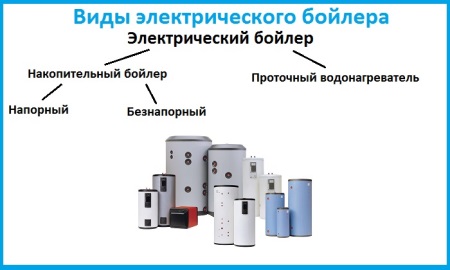
The difference between the flow-through and storage water heater
- First, the size of the devices. The flow water heater weighs little and, unlike the storage water heater, takes almost no space. Boilers come in different volumes - from a modest 10-liter to an impressive 200 liters.
- Secondly, the power consumption. Here the undoubted advantage on the side of the boiler. The average capacity of a household instantaneous water heater - about 8 kW, the boiler is 2-3,5 kW. In a house with old wiring and small allocated power flowing water heater can not be put.
- Another important detail for the selection. Flow-through require the force of the head of water in the system, which limits their use on the upper floors of multi-storey buildings, for example. Boilers do not care about the head power.
- And finally, the differences in installation.Most models of domestic flow-through water heaters can be installed on their own (of course, this does not apply to gas flow-through water heaters and water heaters, installed in the riser). Installation of the boiler, as a rule, will require the participation of professionals.

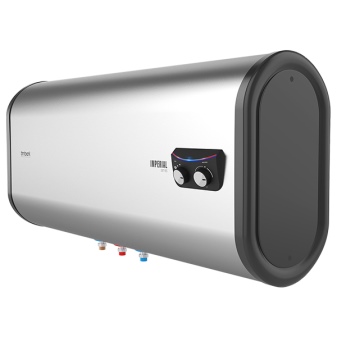
Features of flow-through water heaters
- The relatively modest size of the flow-through water heater is due to the principle of its work. Cold water passes through a narrow tube with a built-in heat exchanger and at the output has a temperature of 45 to 60 degrees. Heat exchangers can work according to a different principle. Also on the market are flow-through water heaters, working on gas - the so-called "columns".
- Flow heaters differ in the way they are installed. Small pressure heaters are installed in the riser and can provide the needs of the entire apartment, for example. Non-pressurized flow-through water heaters are easy to install and can only be used for a single point of use. As a rule, these devices are equipped with their own shower head.
- Adjustment of the temperature mode in a flow heater is possible without turning on the cold water supply, you just need to adjust the power and water pressure. More advanced models with electronic control are able to keep the set temperature at the outlet, regardless of the strength of the pressure and the temperature of the incoming water.
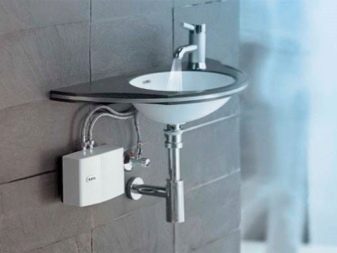
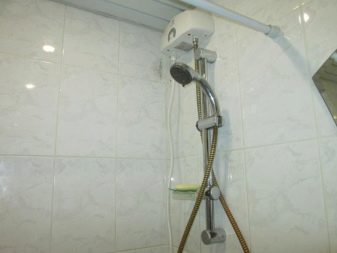
Types of boilers and their features
Boilers have a number of differences by which they can be distinguished from a flowing water heater.
- Accumulation water heaters have a water tank, where the heating takes place.
- The heater is usually located directly in the tank with water or under it.
- The principles of operation of the heat exchanger can be different - heating TEH, coolant with hot water or steam circulating in it, a gas burner. There are models that combine different types of heaters.
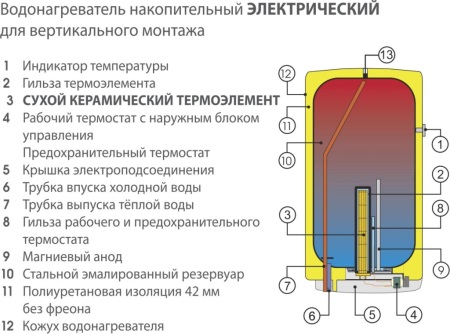
To prevent heat loss, the water tank is thermally insulated on the outside. Boilers are equipped with temperature sensors and a control panel.
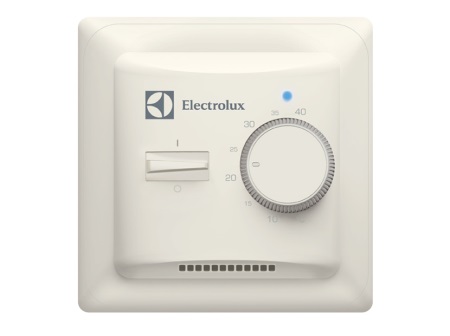
There are two types of storage water heaters:
- pressure (closed);
- non-pressurized (open).
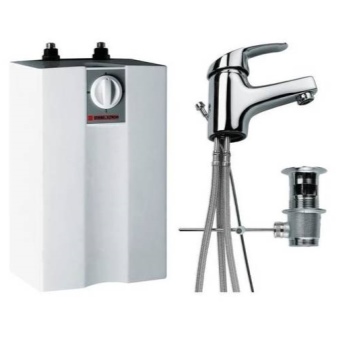
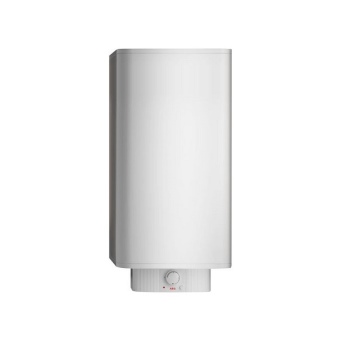
Closed ones can be used in systems with several water intake points. The storage tank in such boilers is made of metal and has a protection against damage to the container at high pressure inside the tank. Protection is provided by special valves, expansion tanks, pressure reducers, thermostatic mixers and pressure gauges.
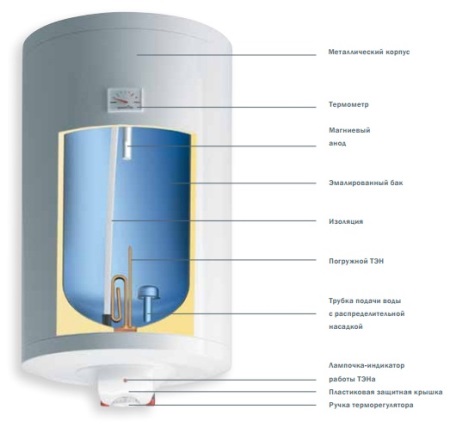
Unpressurized storage heaters are designed for only one water point. This type of heater requires the use of a special faucet (usually not included). This faucet stops water access to the heater when the allowable pressure is exceeded. This allows manufacturers to save on the material for the storage tank, most often these tanks are made of plastic.
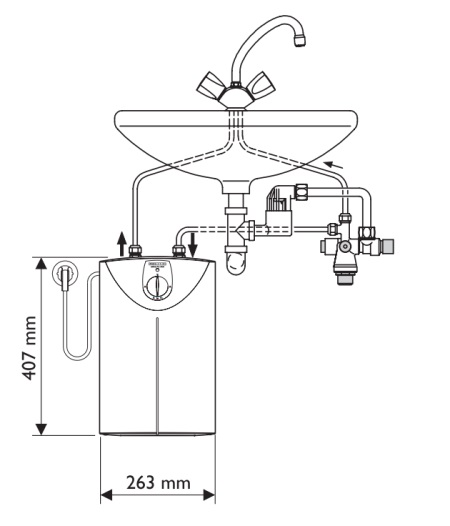
The pressureless boiler, despite the name, is not intended to be used in the absence of a constant supply of cold water. The principle of its device will not allow heated water to escape if the tank is not filled at the same time. Hot water does not mix with cold water due to natural convection - the cold water inlet and heat exchanger are located at the bottom of the tank, and heated water rises to the top, where the pipe for its exit is located.
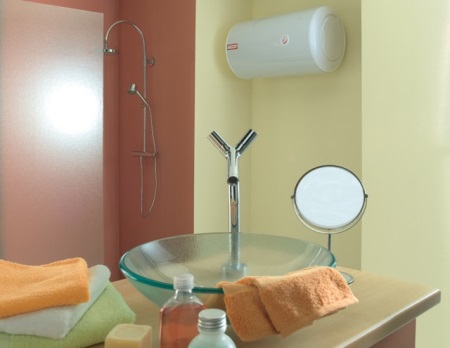
To make the right choice in favor of one or another water heater, we offer to watch the following video, which will tell you what water heaters are and what you need to pay attention to when buying.




